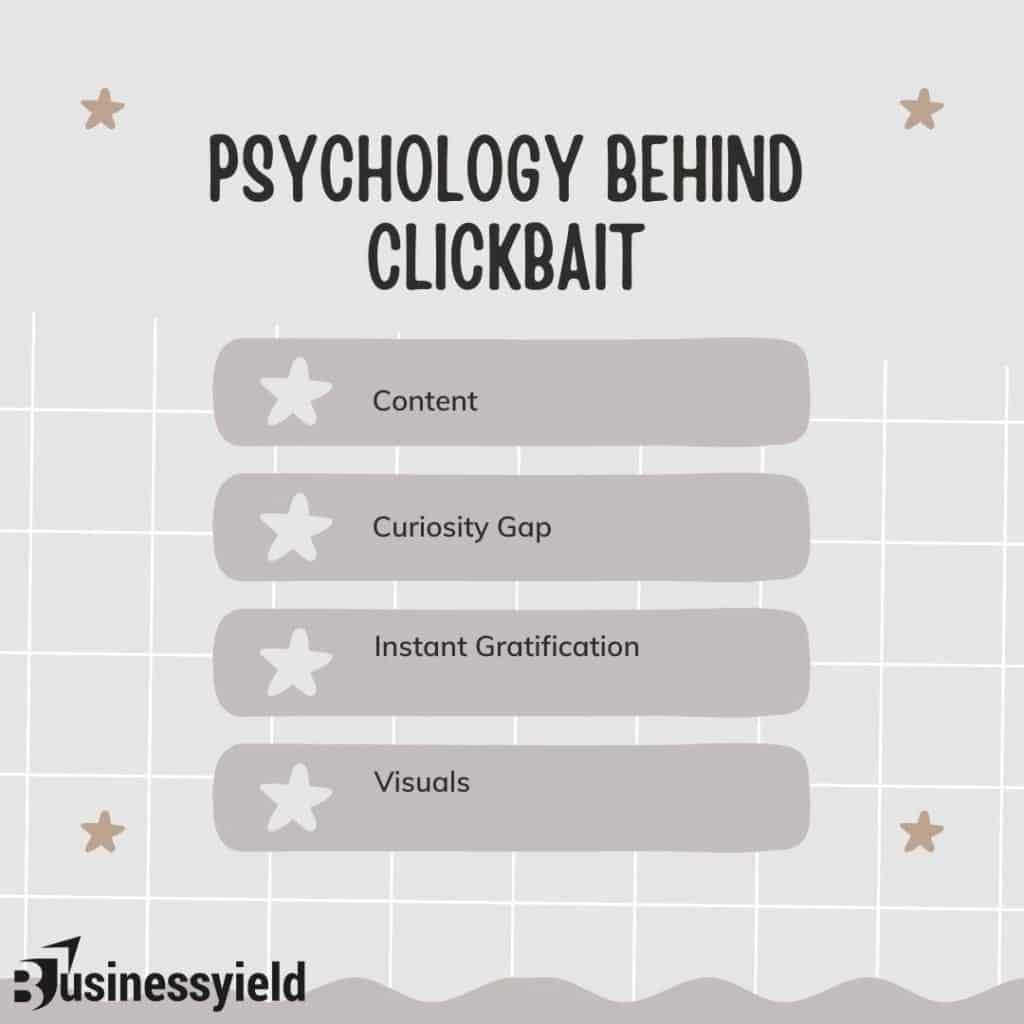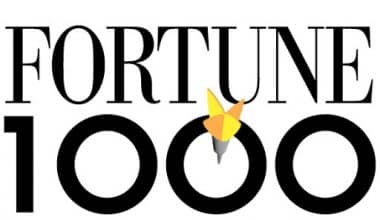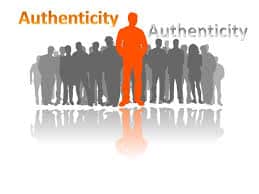Have you ever been reading through a website or online platform, and these pop-ups kept getting in the way? Those are examples of what Clickbait is, and I will discuss them in this blog. Most importantly, I’ll review a few clickbait headlines that work rather than making your audience roll their eyes whenever they see your titles.
Clickbait has become popular on a range of online platforms, including social media, news websites, and content aggregators, due to its ability to pique user interest and increase interaction. However, because of its deceptive nature and proclivity to overpromise, individuals are frequently disappointed when the actual content fails to live up to the headline.
Clickbait strategies usually involve exaggerating or misrepresenting content, as well as the use of clickbait titles. These tactics have the capacity to produce false or misleading information, waste time, provoke conflict, and maintain credibility.
Understanding these tactics promotes critical thinking and prevents one from falling for sensationalist content. By avoiding clickbait, people can better prioritize their internet intake and traverse the vast terrain of online information.
Key Points
- Clickbait refers to online content designed to pique interest and urge clicks, often using sensationalized language or exaggerated claims.
- Clickbait is common on various online platforms but is criticized for being misleading and often disappointing to readers.
- Effective clickbait headlines appeal to curiosity and emotions, but they must remain truthful to avoid losing credibility.
- Examples of successful clickbait headlines include formats like “The Perfect X Doesn’t Exi-,” “POV,” and “You Won’t Believe…”
What Is Clickbait?
The term “clickbait” refers to online content, typically headlines, thumbnails, or titles, designed to pique readers’ interest and urge them to click through to the full article.

Sensationalized language, exaggerated claims, misunderstanding, or controversial images are regularly used in this context to pique readers’ interest and encourage interaction.
The primary goal of clickbait is to drive more visitors to a given website, article, video, or social media post. Nonetheless, clickbait content usually falls short of the headline’s promises, disappointing or annoying the viewer.
Clickbait can be found on a variety of websites, including news sites, social media, content aggregators, and video-sharing platforms. Although clickbait is an effective strategy for attracting viewers and increasing engagement metrics such as page views, clicks, likes, shares, and comments, it is also condemned for being dishonest and contributing to the spread of misleading information and mediocre content online.
In general, clickbait capitalizes on the curiosity gap—the area between what people currently know and what they want to learn—to generate clicks and revenue through advertising or other means of monetization.
What Then Are Clickbait Headlines?
Clickbait headlines are catchy titles that compel people to click through and read the rest of the content. These headlines use sensationalist language, exaggerated claims, ambiguity, or provocative pictures to capture readers’ interest and create excitement.
Clickbait headlines often include sensationalism, ambiguity, insufficient information, emotional appeal, and relevancy to trendy topics. They usually tease readers with intriguing statements or questions without disclosing all the specifics and use exaggerated language to convey a sense of urgency or excitement.
Nonetheless, people go through to satiate their curiosity and interact with the information because these headlines mostly fail to deliver credible or relevant content.
Why Do Clickbait Headlines Work?
Again, these headlines are effective, and the data is there to support this.

A 2023 study analyzed over 100 million headlines to identify which headlines drove the most shares. The phrases “for the first time!,” “you need to…,” and “…of all time” drove the most engagement.
It is theorized that clickbait titles work because they appeal to our curiosity and desire for instant gratification.
Clickbait headlines are meant to stir up strong emotions, increasing the likelihood that people would click on the link to satisfy their need for fast entertainment or information. Our minds frequently struggle to resist temptation!
However, it’s worth noting that the language used in today’s clickbait headlines has evolved. Previous research showed that “clickbait” headlines, such as “Will make you” and “You need to know,” were more effective.
These headlines appear to be less popular today.
10 Clickbait Headline Examples That Actually Work
One of the primary reasons why clickbait has such a terrible reputation is that people frequently exaggerate information or make claims that are just false.
If you mislead your readers, it can undoubtedly backfire, costing you credibility and potential customers.
Instead, use some of the clickbait headline formats listed below to create headlines that will capture readers’ interest while keeping their trust in your company.
#1. “The Perfect X Doesn’t Exi-”
This headline is probably familiar to you because it appears frequently in stories and memes on social media.
This headline is both creative and funny, playing on the idea that something ideal does not exist while, in fact, it is concrete and achievable if only (…).
It’s a playful way to engage the audience and challenge their assumptions, making the information more memorable and shareable.
Here are some examples of headlines with this format:
- “The Perfect Social Media Calendar Doesn’t Exi-”
- “The Perfect Resume Template Doesn’t Exi-”
- “The Perfect Diet Plan Doesn’t Exi-“
#2. Piggybacking
Whether or not you currently have some brand recognition, you can use the “piggybacking” strategy to build authority and increase clicks.
This involves mentioning a well-known individual or corporation in reference to your brand/post.
This format implies that you have the thought leader or brand’s permission to share the content in your article.
Examples of this include headlines like:
- “Katy Perry LOVES This Swimsuit Brand”
- “Forbes Entrepreneur Shares X Tips…”
- “Dancing with the Stars Celeb Reveals…”
- “Nike Swoosh Designer Teaches Us…”
If you are fortunate enough to feature a well-known figure or just publish a follow-up piece on an existing news story or interview, you can use “piggybacking” to gain attention and traffic.
#3. POV
The “POV” (point-of-view) headline trend is a recent one that began on TikTok.
Typically, these headlines appear on videos (TikToks, Instagram Reels, YouTube Shorts, etc.) in which the camera accompanies the main subject as they travel, live their lives, face challenges, and so on.
The POV headline can be used for actual POV videos or as clickbait.
Sometimes, it’s used in a hilarious way, where you don’t see the subject’s actual point of view but rather a curated experience they want you to believe in/follow.
Here are some examples of point-of-view headlines.
- “POV: You just bought the viral extra mini skirt.”
- “POV: You think hair products don’t work.”
#4. “This Is What…”
In this clickbait headline example, the word “this” piques people’s interest in what they will find if they click through to the page.
This is a common clickbait headline; however, it might backfire if the title is too vague.
Avoid titles like “This Is Why You’re Losing Money” or “This Is Why You’re Lonely,” which are overly broad and mysterious.
Instead, target headlines like:
- “This Is Why You’re Not Seeing an ROI on Your Marketing”
- “This Is Why Business Owners are Investing in Bitcoin”
In the later examples, you provide readers with additional context and make them less wary about your content.
#5. “X Things You…”
Headlines like “X Things You…” are effective because they summarize the article’s content and target the reader directly (“you”).
The use of “you” here encourages readers to learn more about themselves (at least, that is what is implied).
You can use this headline as follows:
- “5 Things You Need to Do Before Swimming”
- “10 Things You Need to Know Before Buying a Bike”
- “19 Things You Don’t Know About Your Favorite Sports Teams”
People will be intrigued to see what is on the other side of the click!
#6. ‘LIVE…’
People love original content. So, if you share a live video or webinar, customers will be more likely to click because they know they won’t be able to find this content elsewhere.
This is especially useful for advertisements that drive users to a live webinar, video session, or conference. You can set up a timer so that users only have access for a limited period of time.
Below are a few examples of “LIVE” headlines:
- “LIVE: Nike CMO Shares Her Tips for Building a Memorable Brand”
- “LIVE: Digital Nomad Conference”
- “LIVE Video: How to Level Up Your Marketing Agency”
#7. “…they don’t want you to know.”
In today’s society, there is a lot of paranoia about “the powers that be,” which can include corporate America, politicians, “experts,” academics, cancel culture, and so on.
As a result, consumers are continually concerned about being lied to or misled.
The “..they don’t want you to know” headline works because it implies that the piece contains knowledge that is generally kept hidden by “experts.”
It’s knowledge that you/your brand is willing to offer despite opposition from the powers that be.
Here are some examples of headlines using this format:
- “5 Things Relationship ‘Experts’ Don’t Want You to Know About Dating”
- “6 Things Most Doctors Won’t Tell You About Dieting”
- “10 Things Most Business Coaches Don’t Want You to Know About Sales.”
- “11 Things Scientists Don’t Want You to Know About Space”
#8. “Did You Know…”
This headline is a favourite since it addresses the reader personally (“you”) and poses a challenging question, implying that they will find the correct answer after reading the content.
If they are correct, then they are validated. If they are mistaken, they can read the article and discover something new!
Here are a few methods to use this format successfully:
- “Did You Know Influencer Marketing Is Dying? Here’s what to do instead.”
- “Did you know that SEM is out and SEO is in? Strategies for 2024.”
- “Did You Know That Exercising Brings THESE Benefits?”
- “Did You Know HOW Healthy Mushrooms Are for Your Brain?”
#9. “You Won’t Believe…”
Headlines like “You Won’t Believe THIS Hack!” are usually the worst offenders when it comes to clickbait-y, deceptive titles.
To be effective, you’ll need to be more descriptive.
Examples of effective “You won’t believe…” headlines:
- “Amazing Places You Won’t Believe Exist”
- “You Won’t Believe This Cat’s Detective Skills!”
- “166 Photos You Won’t Believe Are Not Photoshopped”
- “50 Random Facts You Won’t Believe Are True”
#10. “… of the year”
BuzzSumo’s study revealed that the most popular headline phrase was “of the year.” This headline is often used to “round up” the best information on a specific topic (best women’s boots, movies, marketing templates, etc.).
BuzzSumo discovered that headlines featuring “of the year” were mostly focused on rankings and awards.
Here are some examples.
- “Best Websites of the Year”
- “Best Movie Series of the Year: 2024”
- “10 Top Novels of the Year”
- “Best Entrepreneurs of 2024”
How to Effectively Use Clickbait Headlines
In this article, I’ve provided a few examples of how clickbait headlines can benefit your website while maintaining your brand’s credibility and reputation.
The trick is to use eye-catching headlines that stay true to the content on the page.
Capture their attention, offer them a hint as to what they will find once they click, yet leave just enough mystery!
When used correctly, clickbait headlines are extremely effective at capturing a user’s attention and driving clicks.
What Counts as Clickbait?

Clickbait is any marketing and engagement tactic that uses either sensationalist, misleading, withheld, or deceptive content to increase clicks and page views.
What Is Click Bait on FB?
“Click-baiting” is when a user posts a link with a headline or body text that encourages readers to click to learn more but does not provide much information about what they will discover.
What Is Clickbait and Why Is It Bad?
It’s just what the name implies. It baits viewers into clicking something. Typically, this is accomplished through the use of a deceptive image, headline, or description. As a result, the contents of a clickbait story or piece of content almost always never deliver on the promise of the initial sale, which is why some people consider it bad.
To help you get started, download our FREE Template for Writing Honest Clickbait Headlines and start creating headlines that attract clicks and build trust with your audience:
Clickbait Headlines.pdf
- SKILLS TO LEARN: Most Profitable Skills to Learn
- YouTube CPM Secrets: Decode the Algorithm and Skyrocket Your Earnings (No Clickbait Required)
- Understanding CPM Marketing: Expert Insights,Formula, and How to Calculate Cost Per Thousand Impressions”
- 7 Benefits of Using YouTube for Company Marketing Management
- 35+ ESSENTIAL MARKETING TERMS AND DEFINITIONS EVERY MARKETER SHOULD KNOW






